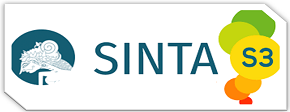Exploring Generation Y And Z Perspectives on Work-Life Balance
DOI:
https://doi.org/10.30587/jurnalmanajerial.v12i02.9629Keywords:
Work-Life Balance, Performance, Happiness, Employee, Generation Z and YAbstract
Background – Employee well-being, both physical and mental, is crucial, as previous research has shown its impact on organizational success and goal achievement. These conditions encompass experiences, skills, emotions, and behavioural patterns and are influenced by individual characteristics, including generational differences.
Aim – This research seeks to explore the state of work-life balance by examining three key dimensions: Work Interference with Personal Life (WIPL), Personal Life Interference with Work (PLIW), and Work and Personal Life Enhancement (WPLE) influence employee performance and happiness within two generational groups: Generation Y and Generation Z.
Design / methodology / approach – This research applies a quantitative and explanatory approach, with questionnaires distributed to 770 respondents, including employees from government, private sectors, entrepreneurs, and other categories. The data was analyzed using PLS-SEM with SmartPLS version 4.
Results and Discussion – The analysis results indicate that all three dimensions significantly influence the performance of employees in Generation Z. However, for Generation Y, only the WIPL and WPLE dimensions have a significant impact on their workplace performance. Both generations experience significant increases in happiness through WIPL and WPLE. Happiness is positive and significant effects on performance and only mediates the relationship with performance in Generation Z for PLIW negatively and for the WIPL and WPLE on performance for both generations with a stronger effects in Generation Y.
Conclusion - This study concludes that work-life balance dimensions influence employee performance differently across generations, with stronger effects in Generation Y than Generation Z. These findings highlight the need for flexible work arrangements to optimize employee performance and happiness.
Research implication – These findings have implications for work patterns, recruitment systems, and company policies, suggesting the need for effective and comfortable working methods tailored to employees from different generational categories.
Limitations – The study’s limitations include the combination of all job categories, which may introduce bias in perceptions of dimensions, character, and performance. Additionally, cultural aspects should be considered as an external factor influencing individual behavior patterns and work methods.
References
Akinyele, S. T., Peters, M. C., & Akinyele, F. E. (2016). Work-Life Balance Imperatives for Modern Work Organization: A Theoretical Perspective. International Journal of Managerial Studies and Research, 4(8), 57–66. https://doi.org/10.20431/2349-0349.0408004
Andert, D. (2011). Alternating leadership as a proactive organizational intervention: addressing the needs of the baby boomers, generation xers and millennials. Journal Of Leadership, Accountability & Ethics, 8(4), 67–83.
Bataineh, K. adnan. (2019). Impact of Work-Life Balance, Happiness at Work, on Employee Performance. International Business Research, 12(2), 99.
https://doi.org/10.5539/ibr.v12n2p99
Burin, S. N. B., & Manafe, D. (2022). Women As Leader: Improving Organizational Performance Through Communication, Commitment, And Organizational Culture In The Kupang City Invesment And Integrated Services Office. Jurnal Inada, 5(2).
http://ejournal.uki.ac.id/index.php/inada//jurnal.inada@uki.ac.id
Capnary, M. C., Rachmawati, R., & Agung, I. (2018). The influence of flexibility of work to loyalty and employee satisfaction mediated by work life balance to employees with millennial generation background in Indonesia startup companies. Business: Theory and Practice, 19, 217–227. https://doi.org/10.3846/btp.2018.22
Damanik, E. M., Man, S., Niha, S. S., Adrianus, J. S., Paridy, A. S., & Manafe, D. (2023). Analisis Pengaruh Budaya Organisasi dan Lingkungan Kerja Terhadap Kinerja Pegawai dengan Motivasi Kerja Sebagai Variabel Intervening pada Puskesmas Alak Kota Kupang. Jurnal Manajemen Pendidikan Dan Ilmu Sosial, 4(1), 276–288.
https://doi.org/10.38035/jmpis.v4i1
de Hauw, S., & de Vos, A. (2010). Millennials’ career perspective and psychological contract expectations: Does the recession lead to lowered expectations? Journal of Business and Psychology, 25(2), 293–302. https://doi.org/10.1007/s10869-010-9162-9
Dencker, J. C., & Martocchio, J. J. (2008). Towards a theoretical framework linking generational memories to workplace attitudes and behaviors. Human Resource Management Review, 18(3), 180–187.
Elnanto, J. G., & Suharti, L. (2021). The Impact of Work from Home to Work Life-Balance and Its Implication to Employee Happiness. International Journal of Social Science and Business, 5(3), 311–318. https://ejournal.undiksha.ac.id/index.php/IJSSB/index
Hayman, J. (2005). Psychometric Assessment of an Instrument Designed to Measure Work Life Balance, Research and Practice in Human Resource Management (Vol. 13, Issue 1).
Herliani, & Priscilla, Y. G. (2025). Faktor-Faktor yang Mempengaruhi Perilaku kerja Gen-Z terhadap Kinerja Karyawan. Jurnal Manajerial, 12(1), 19–43.
https://doi.org/10.30587/jurnalmanajerial.v12i01.8362
Hills, P., & Argyle, M. (2002). The Oxford Happiness Questionnaire: a compact scale for the measurement of psychological well-being. www.elsevier.com/locate/paid
Howe, N., & Strauss, W. (2000). Millennials rising: The next great generation. Vintage.
Ingsih, K., Nuswantoro, D., & Astuti, D. (2021). Improving Teacher Motivation And Performance Through Communication, Work Discipline, Leadership And Work Compensation. Academy of Strategic Management Journal, 20(1), 2021.
Jannah, F., Suryani, I., Manajemen, P., Ekonomi, F., Bisnis, D., & Syiah Kuala, U. (2020). Pengaruh Work-Life Balance Terhadap Kebahagiaan Yang Dimediasi Oleh Self-Esteem Pada Karyawan Sektor Perbankan Kota Banda Aceh. Jurnal Manajemen Inovasi, 1(11), 124–137.
Joo, B. K., & Lee, I. (2017). Workplace happiness: work engagement, career satisfaction, and subjective well-being. Evidence-Based HRM, 5(2), 206–221.
https://doi.org/10.1108/EBHRM-04-2015-0011
Joshi, P. R. (2024). Model for Work-Life Balance: Integrating Theory and Research. SP Swag: Sudur Pashchim Wisdom of Academic Gentry Journal, 1(1), 11–26.
https://doi.org/10.69476/sdpr.2024.v01i01.002
Kaifi, B. A., Nafei, W. A., Khanfar, N. M., & Kaifi, M. M. (2012). A Multi-Generational Workforce: Managing and Understanding Millennials. International Journal of Business and Management, 7(24). https://doi.org/10.5539/ijbm.v7n24p88
Khateeb, F. R. (2021). Work Life Balance - A Review Of Theories, Definitions And Policies. Cross-Cultural Management Journal, XXIII(1), 27–55.
Kiran, T., & Batool, N. (2022). Opening the Black Box of Work Life Balance Theories: a Critical Review of Literature. Pakistan Journal of Social Research, 04(04), 200–208.
https://doi.org/10.52567/pjsr.v4i04.803
Koubova, V., & Buchko, A. A. (2013). Life-work balance: Emotional intelligence as a crucial component of achieving both personal life and work performance. Management Research Review, 36(7), 700–719. https://doi.org/10.1108/MRR-05-2012-0115
Koveshnikov, A., Piekkari, R., & Tienari, J. (2011). Gender in international business journals: a review and a way forward. Academy of International Business Annual Meeting (AIB), Nagoya, Japan, June 24-28.
Kowske, B. J., Rasch, R., & Wiley, J. (2010). Millennials’ (lack of) attitude problem: An empirical examination of generational effects on work attitudes. Journal of Business and Psychology, 25(2), 265–279. https://doi.org/10.1007/s10869-010-9171-8
Larasati, D. P., & Hasanati, N. (2019). The Effects of Work-Life Balance towards Employee Engagement in Millennial Generation. Advances in Social Science, Education and Humanities Research (ASSEHR), 390–394.
Legate, A. E., Hair, J. F., Chretien, J. L., & Risher, J. J. (2023). PLS-SEM: Prediction-oriented solutions for HRD researchers. Human Resource Development Quarterly, 34(1), 91–109. https://doi.org/10.1002/hrdq.21466
Manafe, D., Goetha, S., & Firmansyah, M. (2025). Work-Life Balance and Happiness: Driving Employee Performance in Kupang City. Jurnal Manajemen Bisnis, 12, 183.
https://doi.org/10.33096/jmb.v12i1.1016
Mandagi, D. W., & Aseng, A. C. (2021). Millennials and Gen Z’s perception of social media marketing effectiveness on the festival’s branding: The mediating effect of brand gestalt. Asia-Pacific Social Science Review, 21(3), 102–121.
https://www.researchgate.net/publication/349462834
Nizam, I., & Kam, C. (2018). The Determinants of Work-Life Balance in the Event Industry of Malaysia. International Journal of Management, Accounting and Economics, 5(3), 141–168. www.ijmae.com
Noerchoidah, & Indriyani, R. (2022). Hasil Work Engagement dari Work Life Balance Karyawan Peran Mediasi Job Crafting. Jurnal Manajerial, 9(3), 264–281.
https://doi.org/10.30587/manajerial.v9i03.4265
Okolie, U. C., & Okereka, O. P. (2022). a Comprehensive Review of Work-Family Balance Theories. Indonesian Journal of Strategic Management, 5(2).
https://doi.org/10.25134/ijsm.v5i2.6338
Ötken, A. B. (2013). The Relationship Between Work-Life Balance and Happiness From the Perspectives of Generation X and Y. Humanities and Social Sciences Review, 2(4), 45–53. https://www.researchgate.net/publication/299741273
Pradhana, I. P. D., Surya Putri, N. M. P. D., & Sutrisni, K. E. (2023). “Ada Apa Dengan Gen Z” Studi Fenomenologi Generasi Net Di Tengah Dilematisasi Antara Gaya Hidup Dan Kearifan Lokal. Jurnal Manajerial, 10(3), 542–560.
https://doi.org/10.30587/manajerial.v10i03.6196
Priya, J., Machani, P., Agyei, I. T., Suryanarayana, N. V. S., Thandayuthapani, S., & Lourens, M. (2023). Effects of Performance and Target Pressure on the Psychological Well-Being of Corporate Employees. Journal for ReAttach Therapy and Developmental Diversities, 6(8s), 218–227. https://jrtdd.com
Rachmadini, F., & Riyanto, S. (2020). The Impact of Work-Life Balance onEmployee Engagement in Generation Z. IOSR Journal Of Humanities And Social Science (IOSR-JHSS, 25, 62–66. https://doi.org/10.9790/0837-2505106266
Rakhmatia Nabahani, P., & Riyanto, S. (2020). Job Satisfaction and Work Motivation in Enhancing Generation Z’s Organizational Commitment. Journal of Social Science, 234–240.
Rathi, S. R., & Islam, A. (2024). Work-Life Balance and Job Satisfaction as Predictors of Job Performance among Bankers: A Cross-Sectional Study. Article in International Journal of Indian Psychology. https://doi.org/10.25215/1201.011
Rini. (2024). Pengaruh Work-Life Balance dan Dukungan Suami terhadap Kebahagiaan Perempuan Bekerja (Tinjauan Asosiatif dan Komparatif). Ikraith Humaniora, 8, 188–196. https://doi.org/10.37817/ikraith-humaniora.v8i1
Robbins, S. P., & Judge, T. A. (2016). Organizational Behavior (17th ed.). Harlow Pearson Education.
Shaffer, M. A., Sebastian Reiche, B., Dimitrova, M., Lazarova, M., Chen, S., Westman, M., & Wurtz, O. (2016). Work- and family-role adjustment of different types of global professionals: Scale development and validation. Journal of International Business Studies, 47(2), 113–139. https://doi.org/10.1057/jibs.2015.26
Sirgy, M. J., & Lee, D. (2018). Work-Life Balance : an Integrative Review Work-Life Balance : an Integrative Review. Applied Research in Quality of Life, 229–254.
https://doi.org/10.1007/s11482-017-9509-8
Sismawati, W., & Lataruva, E. (2020). Karyawan Generasi Y Dengan Kepuasan Kerja Sebagai Variabel Intervening (Studi pada PT Bank Tabungan Negara Syariah Semarang). Diponegoro Journal of Management, 9(3), 1–11. http://ejournal-s1.undip.ac.id/index.php/dbr
Skyler, S. (2022). An investigation of work values, job satisfaction, and organizational commitment among hospitality employees of different generations
Smith, T. J., & Nichols, T. (2015). Understanding the Millennial Generation. Journal of Business Diversity, 15(1), 39–47.
Sondakh, R., Sendow, G. M., & Lumintang, G. G. (2023). Pengaruh Human Relation, Beban Kerja Mental dan Work-Life Balance terhadap Kebahagiaan di Tempat Kerja pada Karyawan PT. Garuda Indonesia (Persero) Tbk Branch Office Manado. Jurnal EMBA, 11(3), 1198–1209.
Suganda, U. K. (2022). Reducing turnover intention: The mediating role of work-life balance and organizational commitment. International Journal of Business Ecosystem & Strategy (2687-2293), 4(3), 01–12. https://doi.org/10.36096/ijbes.v4i3.344
Suslova, A., & Holopainen, L. (2019). Job Satisfaction and Employee Motivation: Case Generation Z. International Bussiness Spring.
Walsh, L. C., Boehm, J. K., & Lyubomirsky, S. (2018). Does Happiness Promote Career Success? Revisiting the Evidence. Journal of Career Assessment, 26(2), 199–219.
https://doi.org/10.1177/1069072717751441
Waworuntu, E. C., Kainde, S. J. R., & Mandagi, D. W. (2022). Work-Life Balance, Job Satisfaction and Performance Among Millennial and Gen Z Employees: A Systematic Review. Society, 10(2), 384–398. https://doi.org/10.33019/society.v10i2.464
Weny, Nelwan. Olivia S, & Lumintang, G. G. (2023). Pengaruh Gaya Kepemimpinan, Kebahagiaan dan Orientasi Kerja terhadap Kinerja Pegawai pada Kantor Badan Kesatuan Bangsa dan Politik Daerah Sulawesi Utara. Jurnal EMBA, 11(1), 384–394.
Wolor, C. W., Kurnianti, D., Zahra, S. F., & Martono, S. (2020). The importance of work-life balance on employee performance millennial generation in Indonesia. Journal of Critical Reviews, 7(9), 1103–1108. https://doi.org/10.31838/jcr.07.09.203
Zhenjing, G., Chupradit, S., Ku, K. Y., Nassani, A. A., & Haffar, M. (2022). Impact of Employees’ Workplace Environment on Employees’ Performance: A Multi-Mediation Model. Frontiers in Public Health, 10, 1–13. https://doi.org/10.3389/fpubh.2022.890400
Downloads
Published
How to Cite
Issue
Section
License
Copyright (c) 2025 David Manafe, Maria Odriana Veronica Moi, Stefanie Noviega Bribin Burin

This work is licensed under a Creative Commons Attribution 4.0 International License.






























 P-ISSN: 2354-8592 __ E-ISSN: 2621-5055
P-ISSN: 2354-8592 __ E-ISSN: 2621-5055 
